Men and Jewellery: Tracing The History And The Relationship Between Men And Jewellery in India
- EIH User
- August 1, 2024
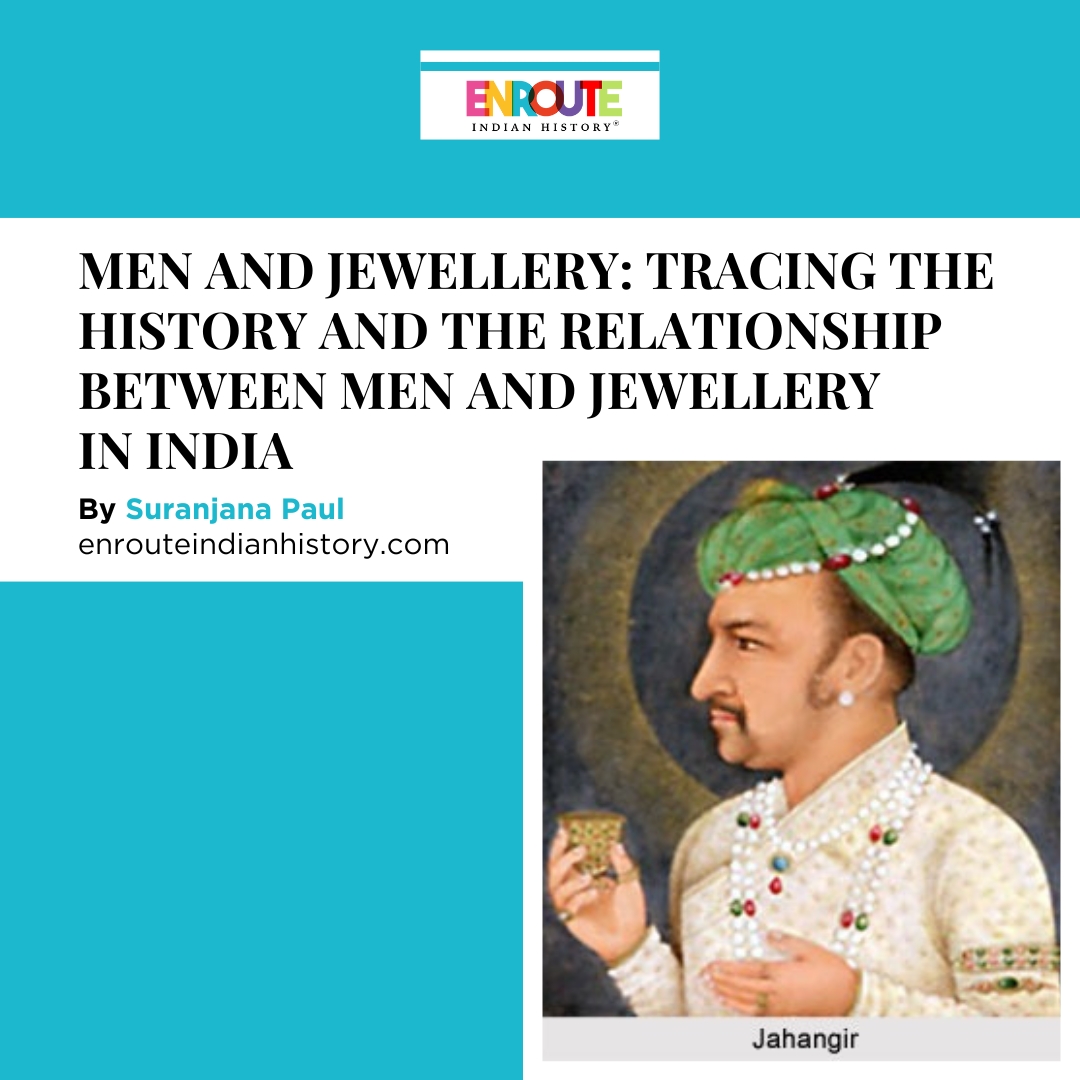
Men’s jewellery
I can still remember when one of my cousin brothers pierced his ear for the first time. At that time, many people taunted him for piercing his era; for them, that was an act like a girl. Typically, people associate jewellery with women, which is not true. Adoring jewellery is not a womanly act for men, especially for Indian men, because they have a rich history from ancient times. This rich history of Indian men wearing jewellery is related to Indian culture, tradition, and religion. It was common among rulers and warriors, and it stood as a symbol of social status, power, and wealth. It also had spiritual significance along with cultural and traditional significance. Even though it used to be different from one region to another, it was also unique in style. Through the uniqueness of the men’s jewellery, the traditional and cultural significance of the region was reflected.
Already have been told that the history of men’s jewellery was rich in India. Men’s jewellery had been spotted from an early age. At that time, men adorned their bodies with shells, animal skins, pebbles, threads, stones or crystals to decorate their bodies along with showing their dominance, respect and the status of leadership. A change occurred during the Indus Valley era, when the metal jewellery was crafted with semi-precious materials and the expatriates of Indian artisans were demonstrated through the jewellery.
History of men’s jewellery was also demonstrated through the paintings at Ajanta and the sculptures at Amaravati, Bharhut and Sanchi, where men and women, commoners and kings, adorned a wide range of jewellery in the paintings and sculptures.
“From left: Details from a painting of Mughal emperor Shah Jahan exquisitely dressed and richly adorned with jewels. Shah Jahan is admiring jewels with his favourite son. Holding a tray of emeralds and rubies, the father contemplates a ruby in his right hand, while the child grasps a peacock fan and a turban ornament. A painting of Shah Jahan’s daughter, Jahanara, adorned in jewels.” Credit: in public domain, via Metropolitan Museum and British Library.
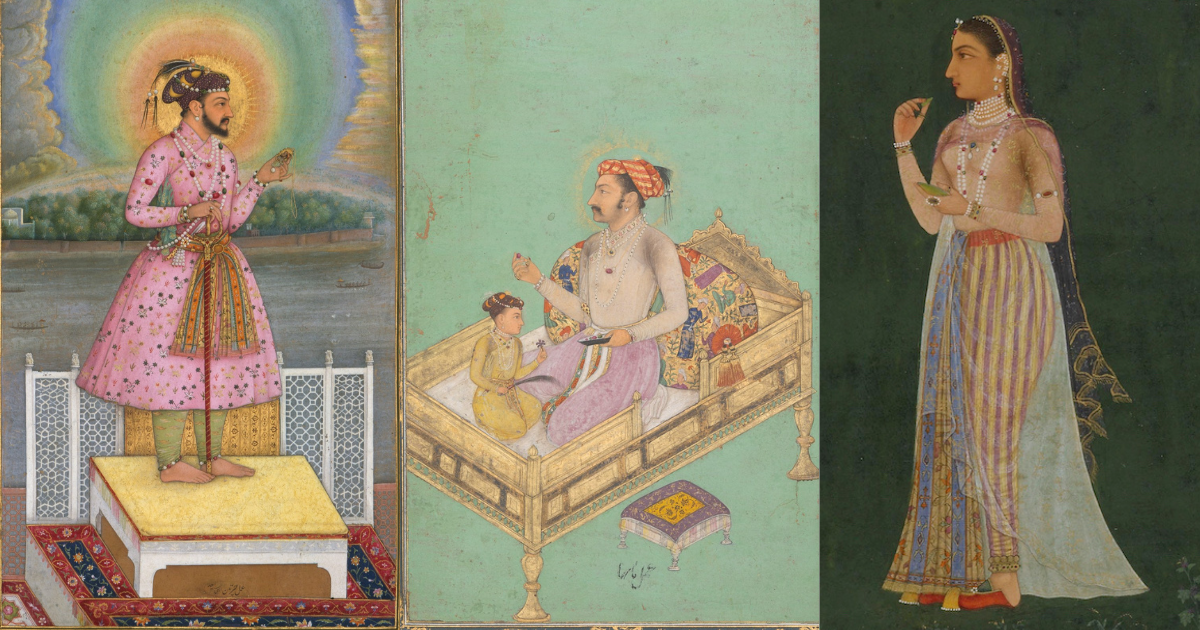
(Source: Scroll)
The Mughals started to adore the jewellery, especially from the Akbar’s regime. Interest in the jewellery grew in the royal men from the Akbar’s time more than other rulers. During the Mughal period, significant changes came in Indian jewellery. They subtly modified the designs from ancient India including a variety of geometrical, floral and natural patterns. Not only, they have modified designs, but they also provided the framework for the development of both conventional and cutting-edge jewellery-making techniques. They made the jadau technique popular, in this technique, the pure gold was heated to form pliable frames to set the precious stones into the gold frame. Even, the Mughals brought the Kundan technique and complicated inlay design. For them jewellery represents the symbol of power and wealth, therefore it was worn by rulers and warriors to showcase their nobility. According to several historians, the Mughal rulers and the royal women from the court paid significant attention towards the jewellery. In addition, they wore jewellery for specific religious purposes as well as its value purposes. From Akbar to Shahjahan every ruler had a unique bond with jewellery including precious stones, and diamonds along with silver and gold which were employed for special occasions and also as a symbol of respect. Their love for jewellery and precious stones was reflected through their art and architecture. The Taj Mahal Emerald, a hexagonal gemstone that was intricately carved with flowers like lotuses, chrysanthemums and poppies this gemstone was crafted in the time of Shahjahan which is an excellent example of the craftsmanship of that period.
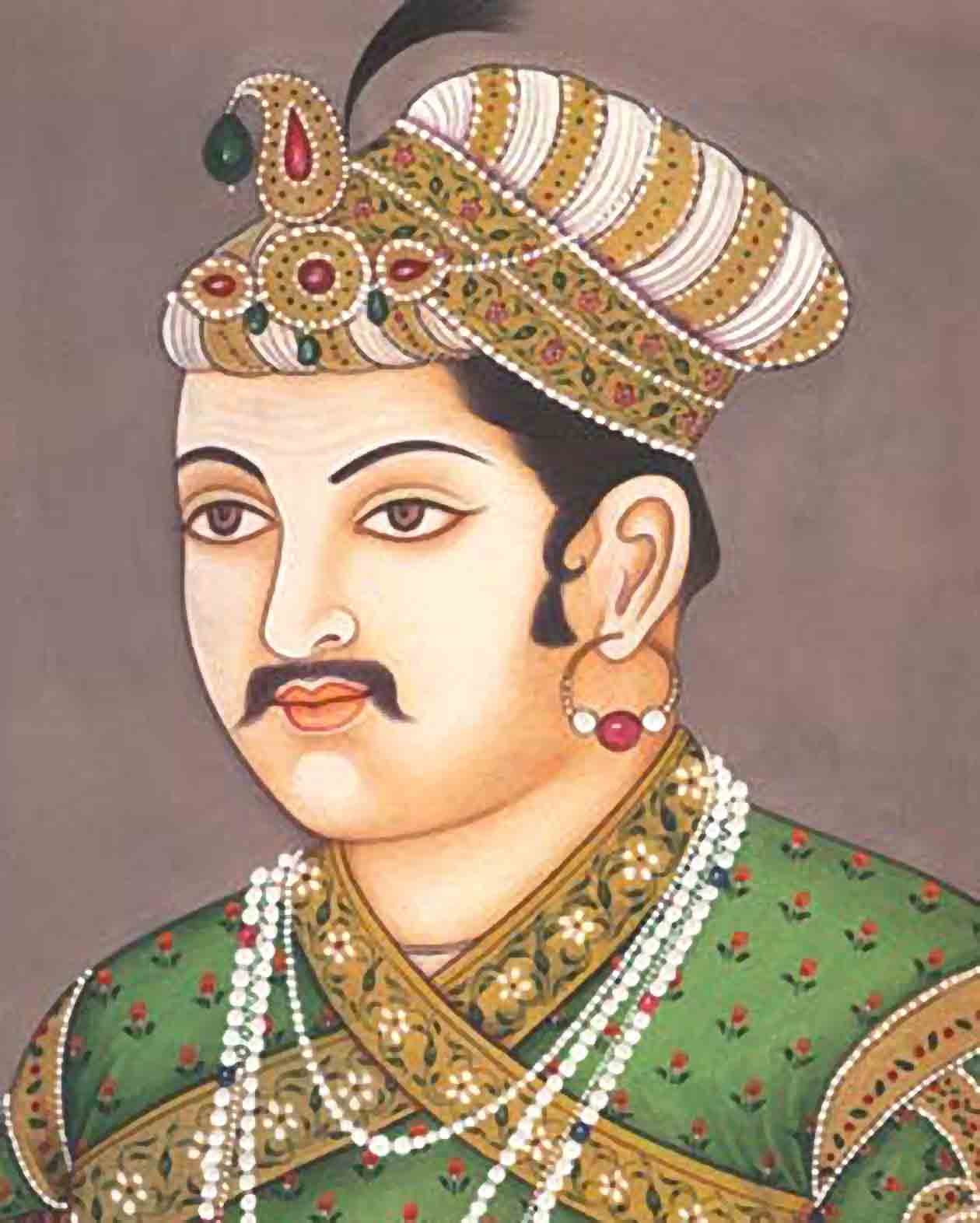
Akbar
(Source: Medium)
In the history of men’s jewellery, turban was an integral part. It was used as a symbol of honour. In the Mughal era, rulers paid special attention to the turban. At that time, people wore turbans according to their status. Mughal emperors embellished turbans with beautiful ornaments. Akbar used an Iranian-styled turban with bird’s feather and the gems were also employed in it. Jahangir used jiggha, a chain of pearls which is stylistically different from the previous emperor. From Sir Thomas Roe’s account, Jahangir wore a diamond armlet set on his elbows and “three rows of diamond on his wrists;” on his birthday celebration and Sir Thomas Roe, also added, that “he had rings on nearly every finger” along with the detailed description of his turban which was embellished with a big ruby, a large size diamond in one side and the three double string pearls and also “plumed with heron’s feather”.
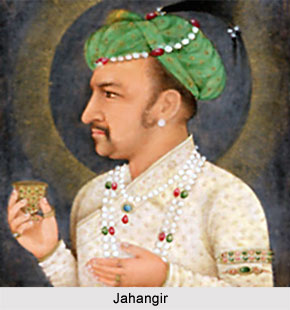
(Source: IndiaNetzone)
During the Mughal period through the jewellery of men, the grandeur and the wealth were exhibited. Along with the ornamented turban, they also adorned themselves with necklaces, rings, and armlets which were intricately crafted. Men often wore nose rings, and earrings proudly, for religious, marital and cultural purposes. Apart from the Mughals, other Maharajas also adorned themselves with different jewellery, like a pearl necklace, belt, and ornamented turban.
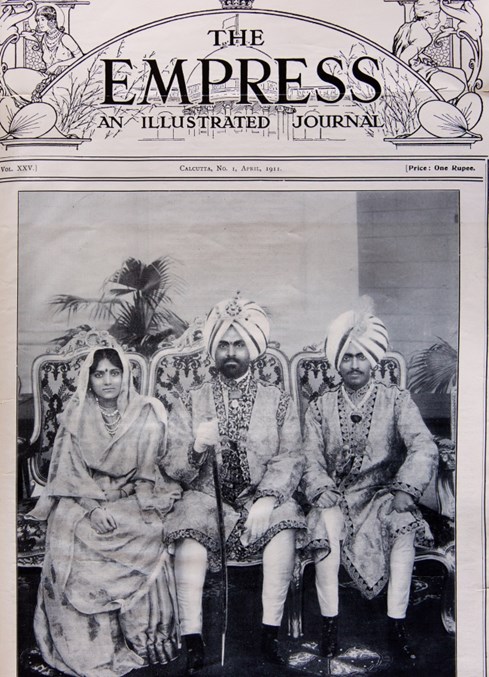
Maharaja of Kapurthala
(Source: Ampersand Travel)
Rajasthani men adorn themselves with traditional jewellery which has a historical and cultural significance. Piercing the ear is a celebrated custom in Rajasthan and it is done within the five years of a child. The Bali is an ear jewellery that is mainly worn by Jats, Gujjars and Rajputs. Besides the earrings, they also wore necklaces like Hansil and Fuldyo. Kada is a very popular Indian jewellery for men, especially in North India. It is a bracelet which is made of silver and gold. Leg ornaments were also important as an indicator of status in the Rajput royal court. It was awarded by the rulers for the recognition of the prince and the recipient wore it on the right ankle, this custom is known as Ta’zim or honour.
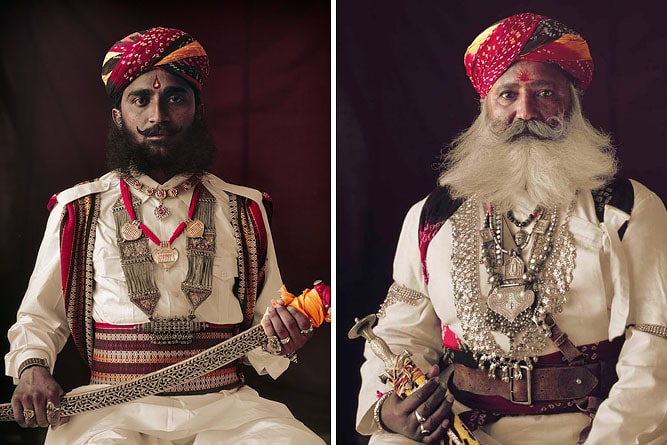
(source: Rajasthan Tours and Drivers)
In the history of men’s jewellery,the cultural and religious significance are the important part. Several pieces of jewellery have been considered auspicious and protective in quality, such as OM or the Swastika. Certain jewellery like necklaces of Rudraksha beads, have been worn for their spiritual beliefs and are believed to provide protection and improve one’s well-being. Traditional jewellery is essential in Indian festivals or customs and is worn by individuals during religious observance, wedding ceremonies and cultural celebrations. In several traditions, some particular jewellery such as the nose ring represents the marital status of a man.
After a long history of men’s jewellery men stopped adorning themselves with heavy jewellery and they reserved it only for the women and popularised the narrative that wearing jewellery is a womanly act but now slowly men are breaking this narrative. Minimal designs of jewellery like bracelets, rings or gold chains are very trendy in the GenZ men. In the present time, Indian jewellery for men is a combination of traditional elements and modern aesthetics. Designers are maintaining the conventional design with a contemporary twist. Mixing materials is also popular among the genZ. Through wearing unisex jewellery, genZ is breaking the stereotype of social norms. Different jewellery brands are making and promoting unique designs, focusing on genZ men and their choices. Talking about contemporary men’s jewellery in India is completely incomplete without Ranveer Singh. He is not afraid to adorn himself with different kinds of ornaments which helps to break the stereotypical gender norms in our society.
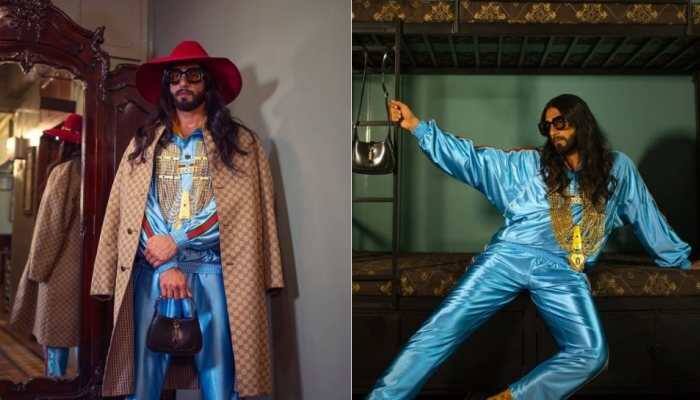
(source: Zee News)
At the end of the writing, it can be said that men of India are breaking the age-old notion of masculinity by experimenting with different styles of jewellery along with fusing them with conventional designs and modern aesthetics.
Reference:
Sapkal. A., 2024. Symbolism, Masculinity, & Identity: Tracing The Evolution Of Men’s Jewellery In India. Homegrown. 21 May 2024. Available from: https://homegrown.co.in/homegrown-voices/symbolism-masculinity-identity-tracing-the-evolution-of-mens-jewellery-in-india. [Accessed 27 July 2024]
Aswal. P., 2022. History of Indian Jewellery. IIAD. 17 August 2022. Available from: https://www.iiad.edu.in/the-circle/history-of-indian-jewellery/#:~:text=Pebbles%2C%20animal%20skins%2C%20shells%2C,dominance%2C%20and%20status%20as%20leaders. [Accessed 27 July 2024]
Deeba, F., 2022. Lovers of jewellery–The Great Mughals. NeuroQuantology, 20(22), p.373. Available from: doi: 10.48047/nq.2022.20.22.NQ10028. (https://media.proquest.com/media/hms/PFT/1/yawlY?_s=aGA1kX7lF%2FjQ60BIShd%2FaUACWtc%3D). [Accessed 27 July 2024]
Pincha. T., 2017. The Taj Mahal’s Embellished Emerald. Medium. 24 October 2017. Available from: https://medium.com/@Zewarlogue/i-have-tried-my-best-to-attribute-images-to-their-creators-and-original-sources-92edf64a7728. [Accessed 27 July 2024]
Allen. T., 2020. The Rajasthani man’s love for his jewellery. Live mint. 28 December 2020. Available from: https://lifestyle.livemint.com/relationships/it-s-complicated/the-rajasthani-man-s-love-for-his-jewellery-111609074731668.html. [Accessed 27 July 2024]Chihiro. 2023. Rajasthani men’s love for the ornaments leaves everybody in awe. Medium. 30 June 2023. Available from: https://medium.com/@dukia.anju/rajasthani-mens-love-for-the-ornaments-leaves-everybody-in-awe-6ef6336cc742. [Accessed 27 July 2024]
- Cultural Significance of Men's Jewelry India
- Evolution of Men's Jewelry India
- Gen Z Men's Jewelry Trends
- History of Men's Jewelry in India
- Indian Jewelry for Men
- Indian Men's Jewelry History
- Men's Jewellery Art in India
- Men's Jewelry in Indian Royalty
- Men's Jewelry Trends India
- Royal Jewelry for Men India
- Traditional Men's Jewelry India


















